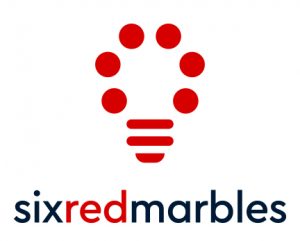
Opinions expressed in AGB blogs are those of the authors and not necessarily those of the institutions that employ them or of AGB.
The COVID-19 pandemic has accelerated a shift in what students think of higher education. This is the final in a series of three posts from Six Red Marbles looking ahead to these possibly seismic shifts and how to prepare your institution for the student of the future.
Faculty are at the forefront of the shifts in learning that the COVID-19 pandemic has caused. As the landscape of learning continues to evolve due to a growing emphasis on online learning, economic uncertainty, and changes in student expectations, higher education institutions should be asking their leadership three key questions to support a long-term strategy.
Choosing What to Keep Doing
After the experimentation and innovation necessitated by the sudden transition to remote teaching, faculty should take some time to reflect on the tools and learning strategies that worked best for them virtually, in person, and in a hybrid learning environment. Classroom instructors may want to make long-term changes to their teaching styles or courses based on lessons learned from this period of forced experimentation.
Some faculty members have found certain teaching tools and tactics to be more effective than the ones they previously were using. Experiments such as flipping the classroom, pre-recording lectures, splitting up longer lectures into smaller pieces, using virtual discussion forums, and changing the way grading and exams are used have increased student engagement with the material and promoted retention of key concepts. Because not every tactic will work for every subject or group of learners, faculty should take some time to consider which practices they want to keep—and which ones they want to avoid—once they have more choices about where and how they teach their students.
Key question: Are systems in place to ensure implementation of new technology and teaching strategies across the organization?
Providing Resources and Support for Accessibility
The shift to online learning caused by the COVID-19 pandemic highlighted the need for learning materials that are accessible to all students. Because creating accessible materials can be a challenge—especially for faculty who may be unfamiliar with these standards—it is vital that staff receive the training they need to understand what accommodations they should provide, as well as the support they need to make these accommodations.
Key question: Is your institution allocating and providing resources to ensure all students have equitable access to the resources and support necessary for success?
Promoting Diversity and Inclusion
Today’s students are expecting their professors to bring diverse perspectives into their classrooms. Faculty should be prepared to engage in conversations about diversity and inclusion and how these concepts relate to the materials they bring into the classroom. In some cases, trauma-informed teaching approaches may be appropriate when discussing certain subjects.
Students may also expect their college or university to provide more support when discussing these topics. It is important for faculty to become familiar with available resources so they can point students in the right direction when needed.
Key question: Does your institution have policies in place to provide a safe and equitable environment?
Connecting Subject Matter to the Real World
Economic uncertainty and rising costs of higher education are causing more students to wonder how their classroom learning will connect to a future career. Faculty should consider how they can help students identify the skills they are developing in the classroom and apply them to a future career. These skills could be hard skills, such as mathematical proficiency that could be used in an engineering career, or soft skills, such as improved communication that could be beneficial in the medical profession. Bringing topics from the outside world into the classroom (as appropriate) also can be beneficial in helping students make connections between what they are learning and potential career paths.
Key questions: Is your institution providing students with opportunities that prepare them for work and success? Are faculty and administrators aware of these resources and bringing them to students?
Building a Sustainable Business Model
As the board considers long-term strategies, members should be asking big questions about business models and financial sustainability. For instance, it is important that faculty and staff have the support and space to consider how they can adapt their classrooms to this changing environment.
Jocelyn Wright is an instructional design manager at Six Red Marbles, an AGB sponsor.
Previous Posts in the Series:
Six Red Marbles References and Resources
- Inclusive Teaching Strategies: https://poorvucenter.yale.edu/InclusiveTeachingStrategies
- Make your content accessible to everyone with the Accessibility Checker: https://support.microsoft.com/en-us/office/make-your-content-accessible-to-everyone-with-the-accessibility-checker-38059c2d-45ef-4830-9797-618f0e96f3ab
- Universal Design for Learning: https://lincs.ed.gov/sites/default/files/2_TEAL_UDL.pdf
With Thanks to AGB sponsor: Six Red Marbles




